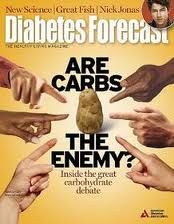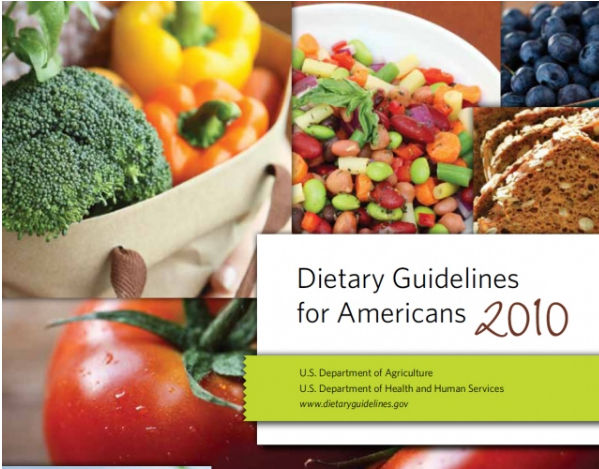Great Carb Debate – Can Glucose Control and Healthy Eating Coexist?
 I appreciate Diabetes Forecast’s effort at tackling the great carbohydrate debates in: Are Carbs the Enemy? (March 2011). How appropriate! It’s National Nutrition Month with the theme – Eat Right with Color (it’s hard to create a color palate without fruits and vegetables!).
I appreciate Diabetes Forecast’s effort at tackling the great carbohydrate debates in: Are Carbs the Enemy? (March 2011). How appropriate! It’s National Nutrition Month with the theme – Eat Right with Color (it’s hard to create a color palate without fruits and vegetables!).
I also appreciate the dual challenges, for people with prediabetes and diabetes, of glucose control and healthy eating. Goals which can often seem at odds.
A few comments on the Forecast article: The article was too glucose control-centric! When one’s eyes are on the prize of glucose-control, which is understandable, eating less carbohydrate seems quite logical. But the article was quite light on emphasizing the years of nutrition research and wisdom showing that for long term health and disease prevention (including prevention of type 2) we need sufficient amounts of healthy sources of carbohydrate - whole grains, fruits, vegetables and low fat dairy foods – the foods we’re being encouraged in the Dietary Guidelines for Americans, 2010 to eat more of (more about that below).
People with diabetes shouldn't be encouraged to be so focused on glucose control in lieu of other health goals - managing blood pressure and blood lipids to prevent/delay cardiovascular disease (goals thought to be just as important as glucose control for complications prevention and health). Plus people with diabetes, like the general public (and some research shows even more so), are at risk of diseases which have been shown to be impacted positively by eating ample amounts of healthy carbohydrate (with they're bounty of needed vitamins, minerals and fiber), such as some cancers for which people with diabetes are at higher risk.
 As noted the need for sufficient healthy sources of carbohydrate was recently reiterated in the Dietary Guidelines for Americans, 2010. Here are a few statements from the Dietary Guidelines Advisory Committee Report's carbohydrate section:
As noted the need for sufficient healthy sources of carbohydrate was recently reiterated in the Dietary Guidelines for Americans, 2010. Here are a few statements from the Dietary Guidelines Advisory Committee Report's carbohydrate section:
- “The Institute of Medicine (IOM) (2002) set an acceptable…range for carbohydrates of 45 to 65 percent of total calories…Although IOM set this level…it is very difficult to meet dietary fiber recommendations at the low end of this range.” (I would add, especially when striving to eat below 1500 calories/day.)
- “Carbohydrate foods are an important source of fiber and other nutrients...Because fiber has known health benefits, it is advisable to select foods high in dietary fiber, whole grain breads and cereals, legumes, vegetables, and fruit whenever possible.” (We’re falling woefully low on fiber consumption with 5% or less Americans meeting the fiber goal of 25 grams/day or 14 g/1000 calories.)
- “To reduce calories in response to the epidemic obesity crisis in the US, non-nutrient-dense carbohydrate sources [sugary foods and drinks, refined grains], should be reduced.”
One more morsel to chew on: The lifestyle interventions in two major NIH studies with positive outcomes – Diabetes Prevention Program (people with prediabetes) and Look AHEAD (Action for Health in Diabetes) (people with newly diagnosed type 2) focused not on reducing carbohydrate but on decreasing calories, skimming fat grams and increasing physical activity to promote weight loss and wellness. Both studies have demonstrated success!
Yes, balancing and achieving glucose control and a healthy food intake can seem in conflict. I’m concerned that when people with prediabetes and diabetes don’t allow much carbohydrate to pass their lips, that they’re simply not eating healthfully. While challenging, succeeding at both goals doesn’t have to be mutually exclusive.

